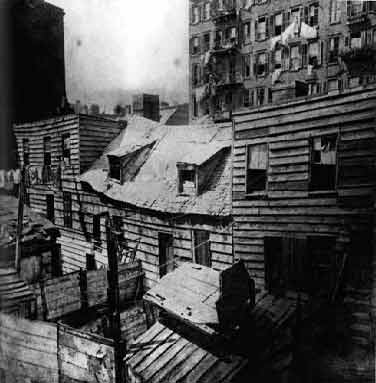The City: Health and Pathology

Siry briefing points
The City: Health and Pathology 
Ian McHarg - Design with Nature, pages, 187 - 195.
"There is no generally accepted definition of health, and the medical professions are entirely
concerned with disease."
Common (mass) sense versus professional (expert) knowledge as sub cultures are compared.
McHarg's point:
". . . the central proposition of this book has been that creativity and destruction are real
phenomenon, that both have attributes, that fitness and unfitness --in the evolutionary sense--
are expressions of these, as are health and disease." (page 195, C#3 ¶#2)
McHarg's means:
Case studies permeated with collateral evidence are presented in an analytical method accompanied
by spatial analysis, comparative assessment and synthesis in his evaluation.
McHarg's ends:
To discover a criteria based on a dual methodology to effectively identify an objective basis on which
to base judgments when using ecological planning methods to improve communities, regions and
human associations.
Health and Pathology are contrasted (just as he initially contrasts: natural and engineering responses to Dutch shore defenses and the Country with the City in Glasgow, Scotland.)

1. A Story of human behavior, health studies and measurable response to stimulus.
2. Identifies the problem as one of measurement, objective standards, criteria and method.
3. Inventories and assesses the existing, related studies of ecology and Philadelphia as a model.
4. Argues based on an analysis of evidence and a synthesis of facts a "working hypothesis."
5. In comparing his hypothesis to a study of pathological conditions in Manhattan he presents a
synthesis od ideas wherein he discovers the "Law of the Optimum" summed up in a paradox.
6. He introduces a new paradox based on observed cases of slum clearance and summarizes his
entire book in a brief set of concluding remarks on fitness (health) and unfitness (pathology).
The actions we take to alleviate the pathology inherent in destructive behaviors and unfit designs
are more pathological than the initial conditions we sought to alleviate.
"There is a creative-fit-healthy environment.
What are its components? All this we must know to create the humane city."
(page, 195)
The City: Health and Pathology
pages, 187 - 195.
1 States his case and its significance in the introduction.
2 Defines the terms in identifying the problem to focus on, if not resolve.
3 Assesses the evidence based on reputable and accessible studies.
4 Argues for an objective basis for ecological planning based on evidence.
5 Evaluates the existing evidence and its flaws in a synthetic working hypothesis.
6 He concludes by discussing the paradoxical character of his findings referring back definitions proposed in part two.
7 Discoveries include: the necessity for criteria, empirical knowledge, law of the optimum
8 He presents a spectrum of responses that we must better define as:
Spectrum
|
||
| beneficial | irrelevant | detrimental |
1. Scott Williamson's work, observations of switch keepers and unfinished --but inspired-- work in London slums on pathology, behavior and health.
2. In defining terms he creates linkages among terms and describe a spectrum based on his polarity -- that like a matrix can be used to analyze the problem of how people respond, morbidly or adaptively to conditions of existence.
3. By comparing a forest and ecological studies to the city of Philadelphia, he presents a model, based on criteria, around which to conduct a spatial analysis of ideas with respect to available records or disease and pathology in the city.
3.1 His model (asking "where are the criteria?")
| Health is a matrix: | Low | Medium | High |
| • personal | |||
| • social | |||
| • surrounding environs |
3.2 Maps are described for every form of recordable disease or pathological
condition that may reveal patterns of healthy places.
hypothesis: that humans are a lot more like animals in our responses than we may realize.
Verbatim Points
"Where is the environment of health?" he asks.
187 actions, polarities, equivalents and parts of a model are defined.
187
Constructive fit: creation is (creative) healthy adaptive
Destructive unfit reduction diseased pathological
188 Three divisions of the ideal of Health is: high - medium and low
188 His student' task is to identify the pathological parts of Philadelphia, inventory.
189 maps of pathological places reveal south side of Philadelphia highly sick.
190-191 Social diseases, morbidity studies and pollutants are mapped out.
ethnicity, violence and economic factors compared spatially.
192
Synthesis of the Philadelphia findings suggests that density and not
economics, race or ethnicity accounts for highly diseased population areas.
He calls for an objective basis in order to test the working hypothesis of
"pathological togetherness."
193
193 - 194 Calhoun and Christian's study of muskrats and density (Evidence)
ATCH hypothesis
rank order and subordination findings
gonadal activity decline
194 He advances a Homology between human and animal's conditions.
194-5 Mid-town Manhattan, NYC study of 300,000 people at 600/square mile.
195 Pollution, Privacy, Noise and stimulus is left out of the NYC study.
195 Paradox of sensory overload and deprivation.
Urban pathology as one of the most serious problems we face
His method revised is :
identify
inventory
assess
evaluate
Summary
"the purported remedies for the urban pathology we are
witnessing today (1960s-70s) are totally inadequate."
So we have to create a humane, healthy, & creative milieu within which we grow.
p. 195.